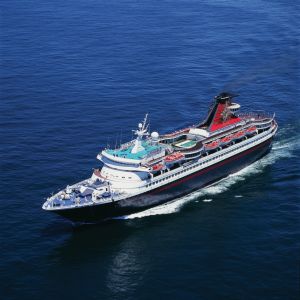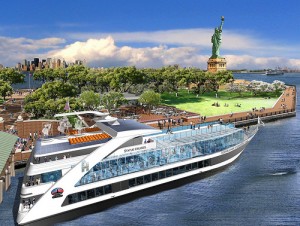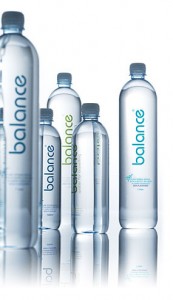
The Alaska cruise industry is having trouble getting traction with legislators to abolish a strict water-pollution rule approved by voters in 2006, Anchorage Daily News reports.
The cruise lines and some communities see the environmental rule as detrimental to tourism.
The 2006 law requires cruise ships to meet tougher pollution standards and puts new taxes, fees and environmental monitoring on the industry. It also bans cruise lines from applying for state permission to use mixing zones. Mixing zones allow cruise lines to discharge pollution that exceed the state’s water-quality standards. The mixing ban for cruise lines goes into effect in 2009.
House Minority Leader Beth Kerttula, D-Juneau, says revising the pollution rules may be a hard sell and seems premature because the cruise lines have until next year to comply.
Cruise ships emit three times more CO2 than airplanes, EL reported last year.
Cruise ships contend they are working hard to lessen their environmental impact. Royal Caribbean said it had installed advanced water purification systems on board and smokeless gas-turbine engines and that it also burns bio-fuel when available.
INCEPTION ON A ROLL
“SOLARMOBIL” – solar-power vehicle

The association that runs Freiburg’s (Germany)
“play bus” travels round visiting children. The
Solarmobil runs off solar power.
________________________
Urban farming is catching on in New Orleans

Linked by Michael Levenston
Jane Stubbs poses for a photo with her chickens, Breakfast, left, Lunch, center, and Dinner, right, at her home in New Orleans. Photo by Rusty Costanza, The Times-Picayune.
This is a neighborhood that doesn’t have a grocery store - By Matt Davis, The Times-Picayune
“It would be great if everyone on this block had some kind of animal and grew vegetables. We could be almost self-sufficient,” said Frank Carter, an engineering technician who trained with the farm network and keeps 12 chickens with his wife, Laura Reiff, in a 60-by-50-foot foot pen in their backyard in Algiers. Their chicken breeds include Rhode Island Reds, Brown Leghorns, and even a Buff Orpington — ordered via the U.S. Postal Service from a breeder in Texas.
“The post office called us at 8 o’clock in the evening and said, ‘We have your live chickens,’ ” Carter said. ” ‘They’re peeping.’ ”
As well as the chickens, Carter and Reiff grow peaches, grapefruit, peppers, watermelons, blueberries, tomatoes, persimmons, figs and bananas. They also have a bee hive that produced 50 pounds of honey this year.
The chickens are “very entertaining to watch,” Reiff said, although there is still some resistance among the couple’s friends to taking the eggs. Some say they’ll eat only white eggs, not the blue eggs from the Brown Leghorns. Others are concerned about cracking an egg open to find a chicken embryo, which is impossible unless a broody hen has sat on a fertilized egg for at least a month.
Jenga Mwendo runs the Guerilla Garden in the Lower 9th Ward. Once a vacant lot, Mwendo petitioned the city to let her buy it for $4,000 last year, and since then, more than 400 volunteers have developed the plot into a working farm producing fresh vegetables.
“This is a neighborhood that doesn’t have a grocery store,” Mwendo said. “And yet a couple of generations ago, everybody had fruit trees in their yards. We’re just trying to preserve and encourage that tradition.”
Frank Carter collects chicken eggs from his coop at his Algiers home. When it comes to raising and slaughtering livestock, New Orleans also affords unique opportunities for free experimentation. Simply put, the New Orleans Police Department seems to have bigger fish to fry than cracking down on urban farmers.
______________________
BP set to begin oil drilling off Libya

The Gulf of Mexico spill has raised serious safety concerns for BP. Oil giant BP has confirmed it will begin drilling off the Libyan coast in the next few weeks.
The deepwater drilling will take place in the Gulf of Sirte following a deal signed in 2007 with Libya on oil and gas development.
The news comes amid major concerns over BP’s environmental and safety record following the Gulf of Mexico spill. It also follows claims, denied by BP, that it lobbied for Lockerbie bomber Abdelbaset Ali al-Megrahi’s release. The Libyan was convicted of blowing up a Pan Am jumbo jet over the Scottish town in 1988, killing 270 people, but was freed by the Scottish government on medical grounds last August.
When the deal with Libya’s National Oil Company was announced in 2007 BP set a minimum initial exploration commitment of $900m.Chief executive Tony Hayward at the time hailed it as “BP’s single biggest exploration commitment” and “a welcome return to the country for BP after more than 30 years”.
BP spokesman David Nicholas told AFP news agency on Saturday: “We expect to begin the first well in the next few weeks”, adding that the wells “can take six months or more to drill”.
______________________

The GE Ecomagination Challenge
Is a $200 million innovation experiment where businesses, entrepreneurs, innovators and students
share their best ideas on how to build the next-generation power grid – and just might get funded.
QUESTPOINT GOES MOBILE – Beta
Just log in from your iPhone, Blackberry or mobile device to get the latest stories, audio and video.

Just Google QuestPoint on your mobile. Then click the link!
 Bosco Verticale is a project for metropolitan reforestation that contributes to the regeneration of the environment and urban biodiversity without the implication of expanding the city upon the territory. Bosco Verticale is a model of vertical densification of nature within the city. It is a model that operates correlated to the policies for reforestation and naturalization of the large urban and metropolitan borders (Metrosbosco). Metrobosco and Bosco Verticale are devices for the environmental survival of contemporary European cities. Together they create two modes of building links between nature and city within the territory and within the cities of contemporary Europe.
Bosco Verticale is a project for metropolitan reforestation that contributes to the regeneration of the environment and urban biodiversity without the implication of expanding the city upon the territory. Bosco Verticale is a model of vertical densification of nature within the city. It is a model that operates correlated to the policies for reforestation and naturalization of the large urban and metropolitan borders (Metrosbosco). Metrobosco and Bosco Verticale are devices for the environmental survival of contemporary European cities. Together they create two modes of building links between nature and city within the territory and within the cities of contemporary Europe. The first example of a Bosco Verticale composed of two residential towers of 110 and 76 meters height, will be realized in the centre of Milan, on the edge of the Isola neighbourhood, and will host 900 trees (each measuring 3, 6 or 9 m tall) apart from a wide range of shrubs and floral plants.
On flat land, each Bosco Verticale equals, in amount of trees, an area equal to 10.000 sqm of forest. In terms of urban densification the equivalent of an area of single family dwellings of nearly 50.000 sqm. The project is now underway.
The first example of a Bosco Verticale composed of two residential towers of 110 and 76 meters height, will be realized in the centre of Milan, on the edge of the Isola neighbourhood, and will host 900 trees (each measuring 3, 6 or 9 m tall) apart from a wide range of shrubs and floral plants.
On flat land, each Bosco Verticale equals, in amount of trees, an area equal to 10.000 sqm of forest. In terms of urban densification the equivalent of an area of single family dwellings of nearly 50.000 sqm. The project is now underway.
















